COOK BOOK:
We know form working through the first harmonic functions page that every key has 8 subdominant chords
Harmonic Functions PageWe're going to take a set progression and try replacing a subdominant chord with all the others
We're going to explore all the other subdominants in the key of C
There are 100's of ways to impliment these subdominant chords in the key of C
But this excercise demonstrates how they can all work in a restricted context
Here's the progression:
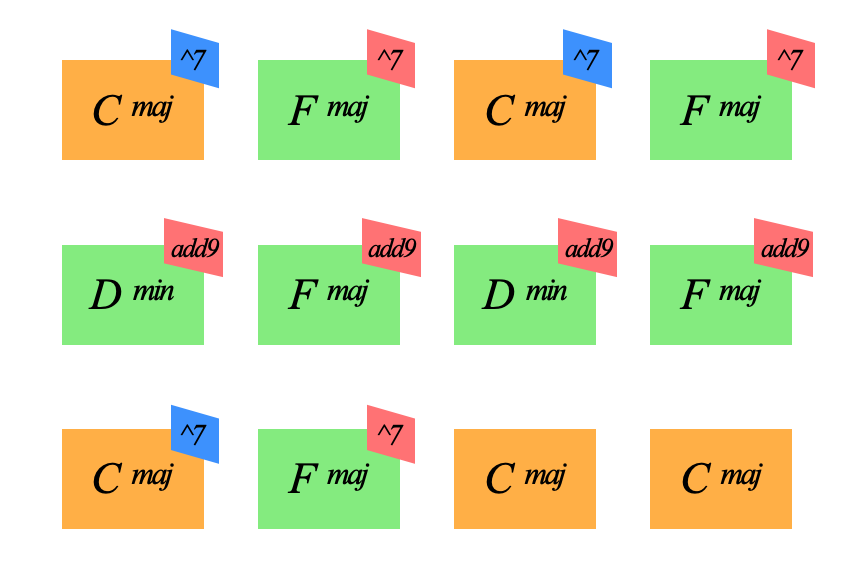
It goes:
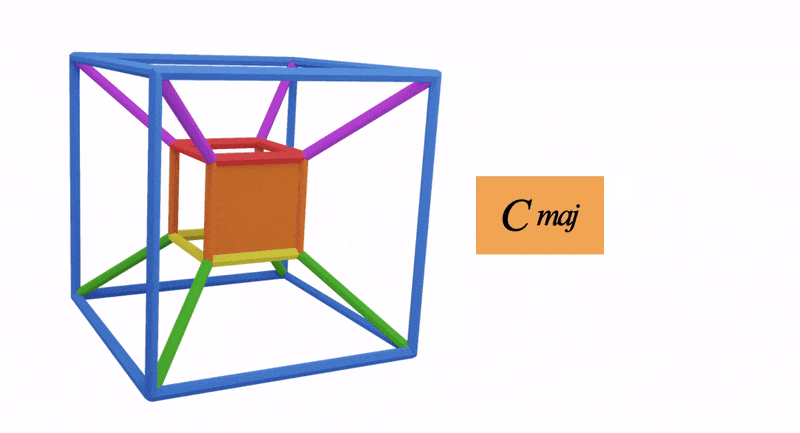
We're going to use our hypercube chart from the colours pages
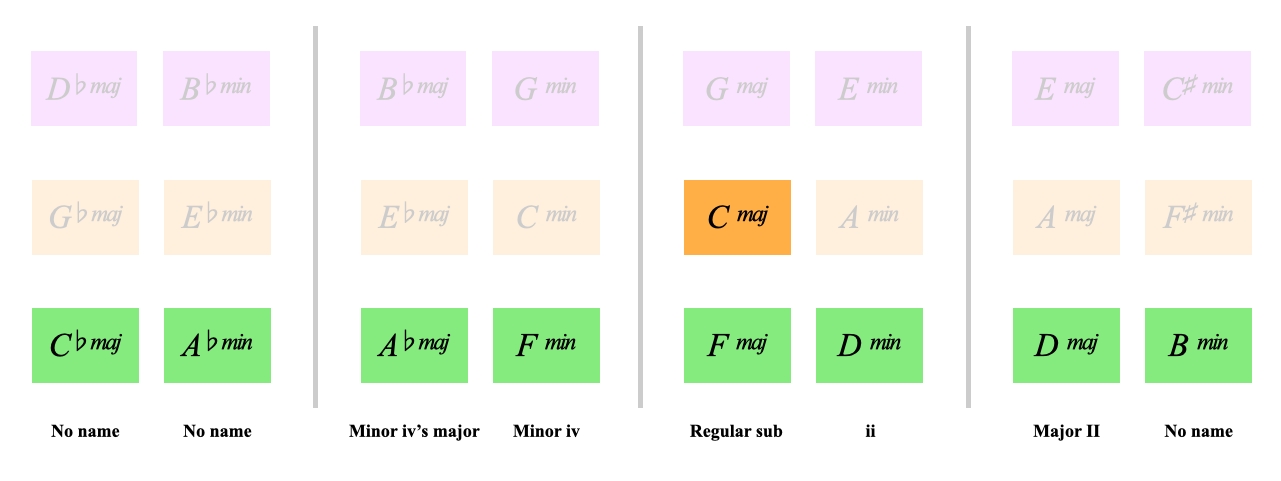
And explore all 4 green faces of the hypercube:
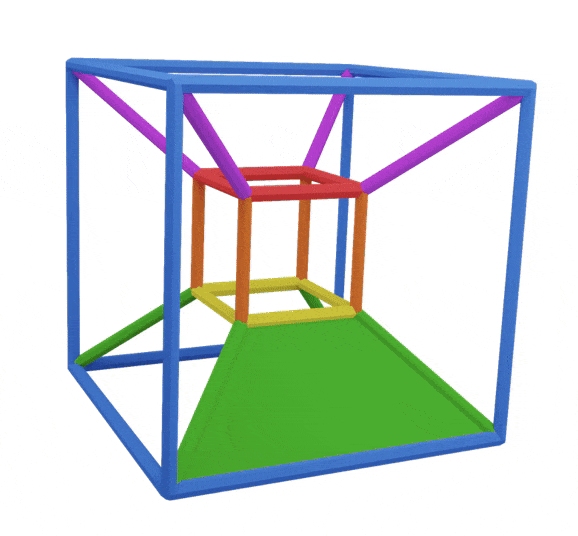
One at a time, Let's swap the D minor in our progression for each of the other green chords
We've already used Fmaj and Dmin, that leaves 6 other green chords to explore:
1. D major
2. B minor
3. B major
4. Ab minor
5. Ab major
6. F minor

Let's start with changing D min for D major
I also kept the 9th (E) at the top of the chord
Let's listen:
Here we can see C major, D minor and D major in the hypercube:
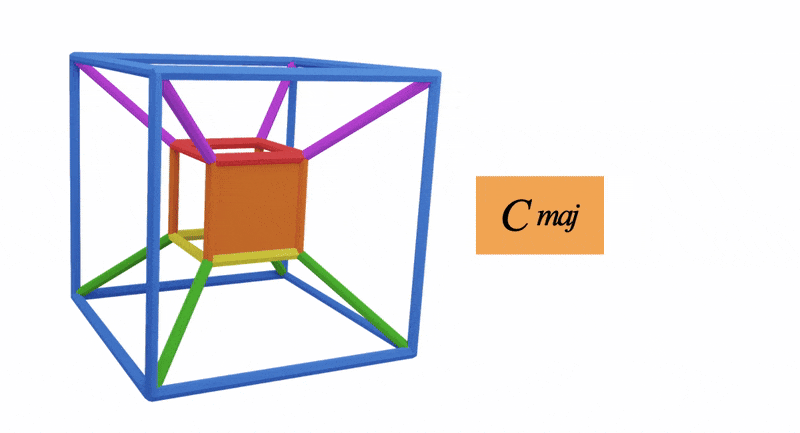
We're rotated 90 degrees around
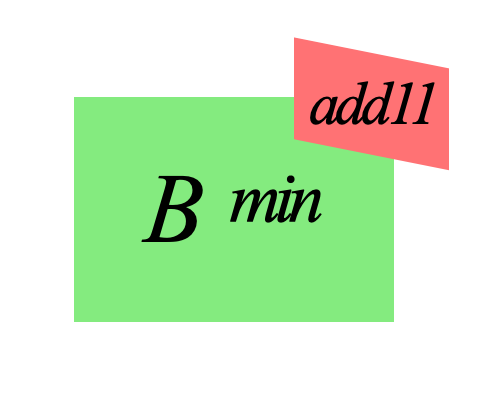
This takes us from D major to B minor
B minor doesnt have a functional name in the key of C
But we could call it 'the relative minor of the major II'
Here it is in our progression
I've once again kept the E note on top, this time being the 11th of B minor
This created a lovely whole tone interval at the top of Bm11 (D and E, the 3rd and 4th of B min)
Which I decided to hold through into the F major (D and E, being the 6th and 7th of F maj)
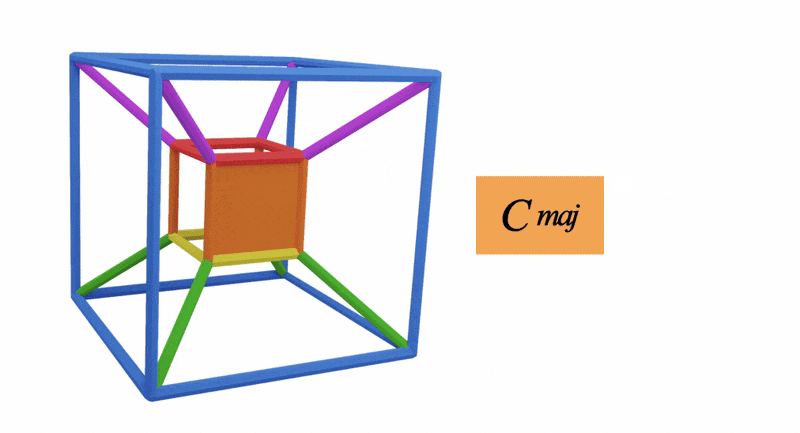
The hypercube shows us that our B minor is from the same green square as the previous chord choice D major
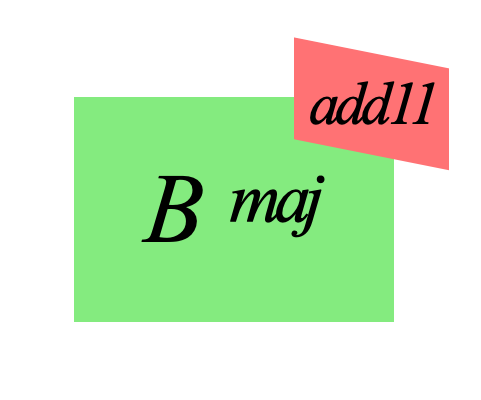
which on our chart is Cb (because its in the key of Gb) But is also just a B major
I played the same shape for B min but simply raised the 3rd
This gives us a Badd11 with the E on top
Let's hear it:
Our whole tone interval at the top in the previous one has now become a semitone
and then when we go to F major it goes back to being a whole tone
This movement really melts my heart
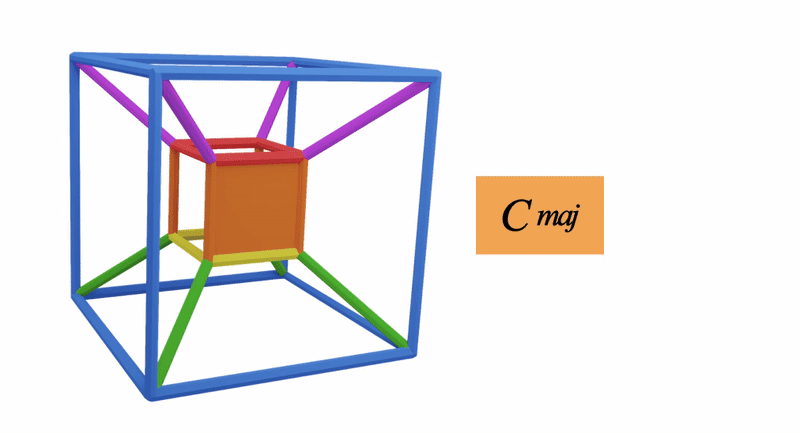
We can see here how our B major is opporsite the initial D minor in the hypercube (180 degrees away)

I've taken a new approach to voicing this one
rarther than holding the open E string, i'm going for a a semitone clash between Bb and the open B string
This is the m3rd and 9th of Ab minor
This shape moves really nicly to a regular F^7 shape
We've also got a slightly different rhythmic vibe going on that felt natural here
Like B major, this one is also 180 degrees around the hypercube
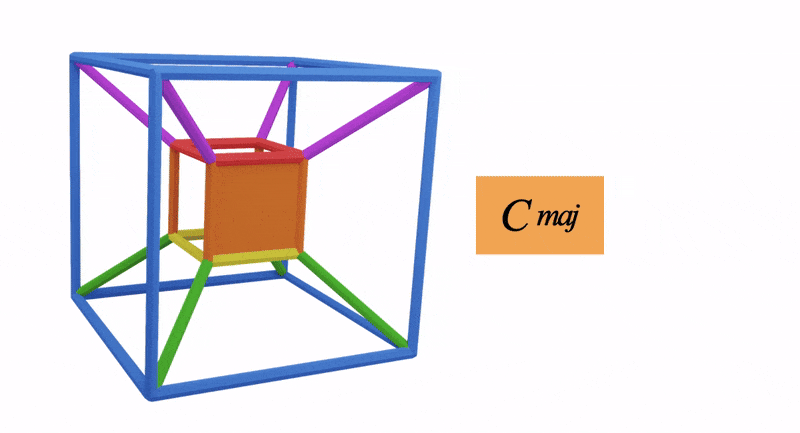
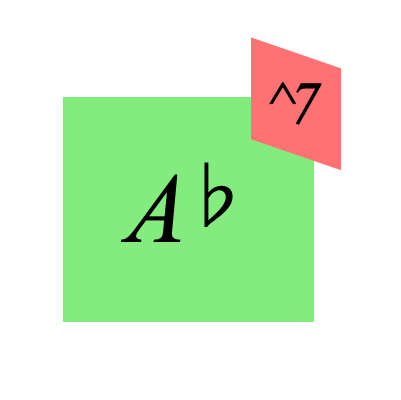
This is quite a classic chord in C because it's chord VI in the key of C minor
I'm just using a straight ^7 voicing for it
Which moves nicely into this ^9 voicing for F major
I loved holding those two notes (G and C) between Ab^7 and F^9
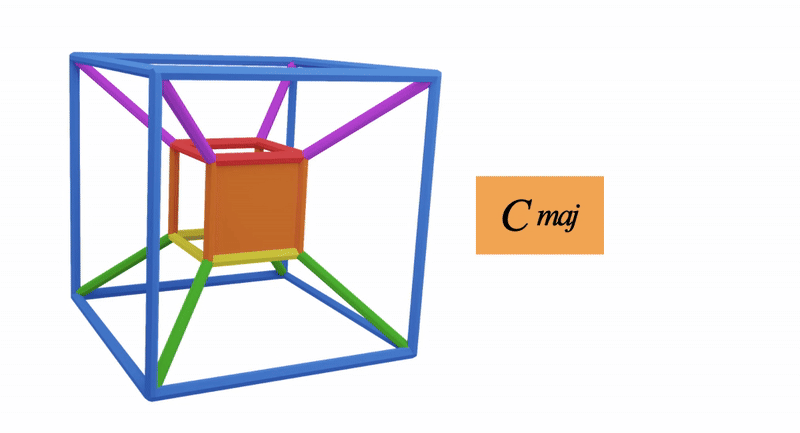
We can see how we're back round to being close to the initial D minor square once again
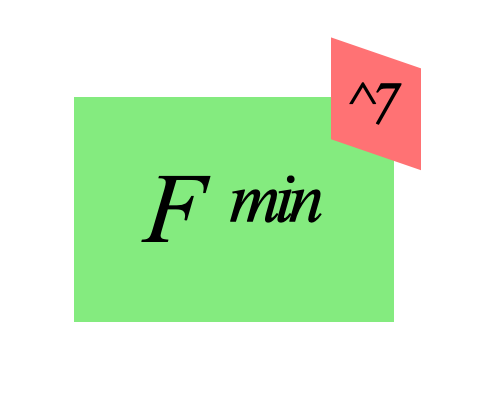
The minor iv, this has been used again and again across history for its emotional potency
Let's hear it in our tune:
I used the same F^7 voicing but simply dropped the 3rd
Keeping the E natural on top giving a minor^7 sound
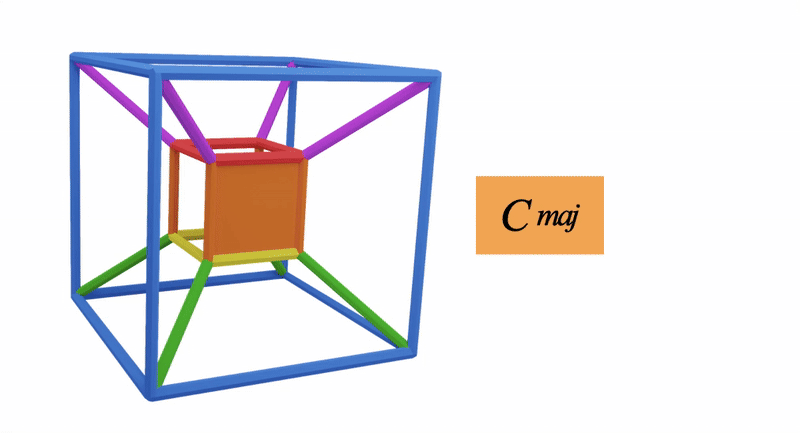
We've completed a full 360 trip around the hypercube!

TABS/NOTATION COMING SOON
Back to Cook Book